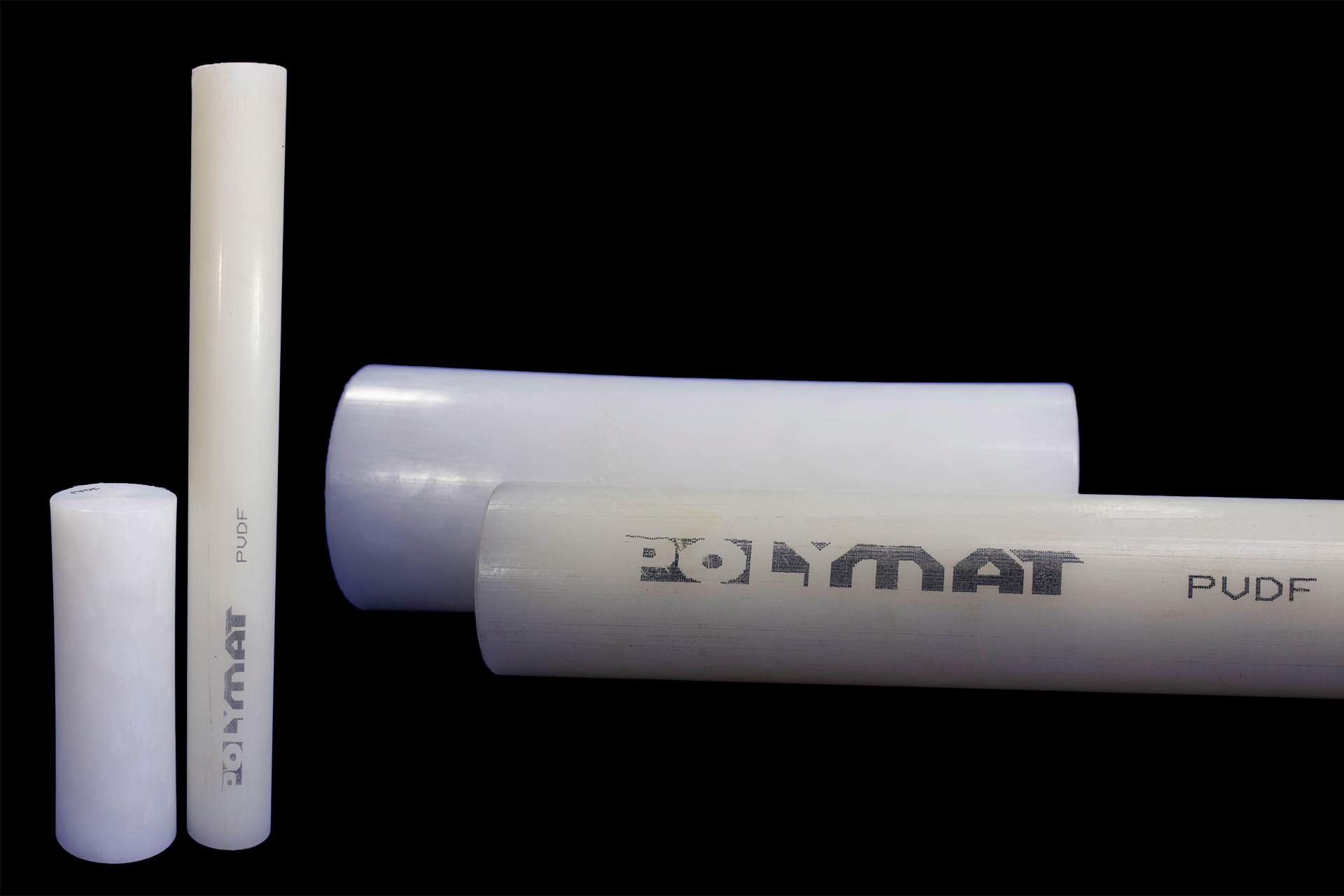
Polymat PES, PEI
Polyethersulfone (PES) is a high-performance thermoplastic renowned for its exceptional thermal stability, mechanical strength, and chemical resistance. PES is extensively used across a range of industries including aerospace, automotive, medical, and industrial applications, thanks to its impressive material properties. Here’s a detailed overview of PES:
Mechanical Properties
- High Tensile Strength: Up to 90 MPa, providing robust performance under stress and ensuring reliability in demanding applications.
- Excellent Impact Resistance: Capable of withstanding high-impact forces without significant deformation or failure, making it suitable for tough environments.
- Superior Fatigue Resistance: Maintains performance and durability over repeated stress cycles, reducing the risk of material failure and ensuring long-term reliability.
- Low Coefficient of Friction: Reduces wear and tear, enhancing the longevity of components such as bearings and gears.
- High Modulus of Elasticity: Ensures rigidity and stability under load, maintaining shape and performance in high-stress applications.
- Outstanding Creep Resistance: Resists deformation under constant load over time, ensuring long-term dimensional stability and performance.
Thermal Properties
- High Continuous Service Temperature: PES can maintain its mechanical properties and structural integrity at temperatures up to approximately 180°C (356°F) for extended periods.
- Exceptional Thermal Stability: The material remains stable and does not degrade when exposed to high temperatures, making it suitable for demanding thermal environments.
- Low Thermal Expansion: PES exhibits minimal thermal expansion, ensuring that it retains its dimensional accuracy and mechanical properties despite temperature fluctuations.
- High Glass Transition Temperature: PES has a glass transition temperature around 225°C (437°F), above which it maintains its mechanical strength and rigidity.
- Thermal Insulation Properties: Provides effective insulation against heat, helping to manage thermal conditions in various applications.
- Thermal Oxidative Stability:PES resists oxidation and degradation in high-temperature oxidative environments, ensuring long-term performance and durability
Chemical Properties
- Exceptional Chemical Resistance: PES is highly resistant to a wide range of chemicals, including acids, bases, and organic solvents.
- Resilience to Corrosive Environments: Withstands exposure to harsh chemicals without significant degradation, making it ideal for use in chemical processing and industrial applications.
- Resistance to Hydrolysis: Maintains its mechanical properties and dimensional stability even when exposed to moisture and high-pressure steam, reducing the risk of hydrolytic degradation.
- Non-reactivity: The material does not react with most chemicals, ensuring it remains stable and maintains performance in aggressive environments.
- Durability in High-Temperature Chemical Environments: PES retains its chemical resistance even at elevated temperatures, providing reliable performance in extreme conditions.
- Low Permeability: It has low permeability to gases and liquids, which helps in applications requiring containment of fluids or gases.
Application Sectors
Aerospace
PES is used in aircraft components, thermal insulation, and structural parts due to its high strength-to-weight ratio, excellent thermal stability, and resistance to extreme temperatures and harsh environments.
Automotive
PES is utilized in engine components, sensors, and electrical connectors thanks to its high mechanical strength, resistance to high temperatures and automotive fluids, and its low friction and wear properties.
Medical
PES is employed in diagnostic equipment, sterilizable surgical instruments, and medical tubing due to its biocompatibility, resistance to sterilization processes, and high mechanical strength.
Chemical Processing
PES is used in applications such as pumps, valves, seals, and reactors because of its excellent chemical resistance to acids, bases, and solvents, high thermal stability, and durability under high pressure and temperature.
Oil and Gas
PES is utilized in downhole equipment, seals, gaskets, and bushings due to its high resistance to corrosive environments, ability to withstand extreme temperatures and pressures, and exceptional mechanical strength.
Electronics and Electrical
PES is used in insulators, connectors, housings, and electronic components because of its high electrical insulating properties, thermal stability, resistance to electrical arcing, and excellent dimensional stability.
Industrial Manufacturing
PES is employed in bearings, gears, wear pads, bushings, and seals due to its high wear and abrasion resistance, low friction, durability in high-stress applications, and thermal stability.
Defense and Military
PES is utilized in ballistic armor, precision components, and high-strength structural parts due to its high impact resistance, lightweight nature with a high strength-to-weight ratio, durability in extreme conditions, and resistance to chemicals and temperatures.
Semiconductors
PES is used in wafer handling parts, process equipment components, and semiconductor fabrication tools because of its high thermal stability, low outgassing, precision, and resistance to high temperatures and vacuum environments.
Food and Beverage
PES is employed in components for processing and packaging machinery, and food handling equipment due to its compliance with food safety standards, resistance to high temperatures and cleaning agents, and durability in processing environments.
Energy
PES is used for renewable energy systems, such as wind turbine parts and solar panel components, due to its high strength, resistance to environmental conditions, and longevity under operational stresses.
Textile and Apparel
PES can be used as high-performance fibers and fabrics for specialized clothing and gear, due to its strength, durability, and resistance to wear and environmental factors.